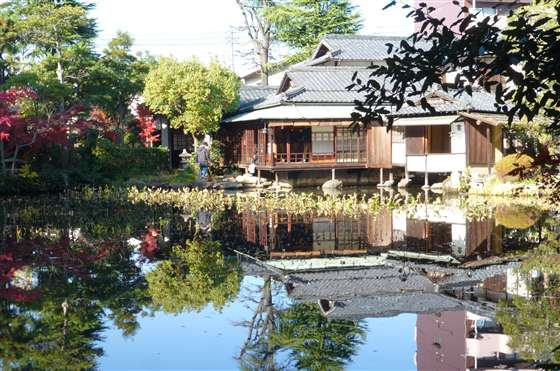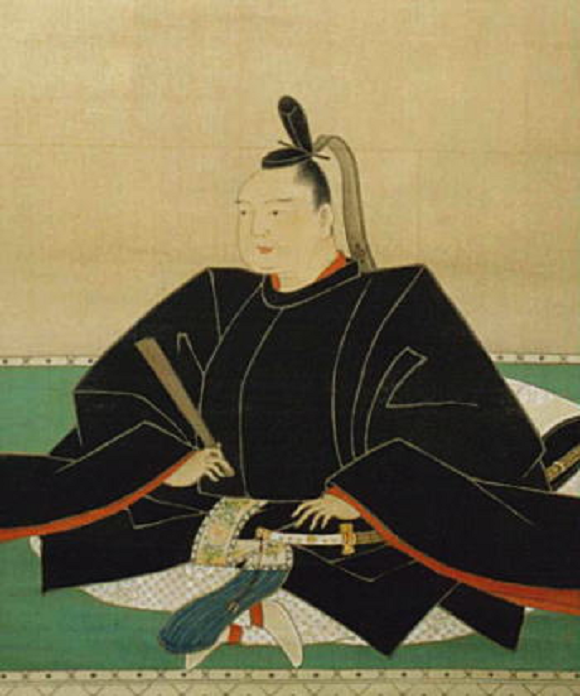
Japan loves to devise top three lists, and Okayama City’s Korakuen is held to be one of the country’s three best gardens. Anyone who’s visited will tell you that it’s indeed beautiful, but Korakuen isn’t the city’s only garden, or even its oldest.
Okayama is also where you’ll find Tokoen, a garden with a history that stretches back to the early days of Japan’s feudal Edo era. Tranquil and easily accessed by public transportation, Tokoen would make an ideal spot for history buffs and nature lovers looking for a less crowded, quieter urban oasis than Korakuen.
Sadly, though, after roughly four centuries, Tokoen has closed down, and is soon likely to be demolished and replaced with a condominium complex.
Although the exact year Tokoen was completed is unclear, historians do know that it was initially the private retreat of Ikeda Tadakatsu, the lord whose domain included present-day Okayama City.
▼ Ikeda Tadakatsu
Ikeda’s short life lasted from 1602 to 1632, making Tokoen one of the oldest gardens in Okayama Prefecture, and also several decades older than Korakuen, which was built in 1700.
The garden’s layout is thought to be the work of noted landscaper Kobori Enshu, who designed Tokoen in the kaiyu style, in which visitors are led on a course that winds around the grounds and past a spring-fed pond and tea house. As with many Japanese gardens, it was created with sight lines that ”borrow” aspects from the surrounding scenery, which in Tokoen’s case means affording visitors views of nearby Mt. Misaoyama.
After the death of Ikeda, ownership of the garden was transferred to the Niwa samurai family, and Tokoen has remained in private hands since. Although Okayama was bombed in the closing days of World War II, the garden escaped damage, and several of its features, such as the pond and seven-layer granite tower (which itself was constructed during the Kamakura period which lasted from the 12th to 14th centuries), have been left as they were when Tokoen was first opened centuries ago.
Despite remaining in private ownership, for many years the roughly 700-square meter (39,826-square foot) garden was open to the public for a modest 400 yen (US $3.95) admission fee.
Tragedy struck, though, in 2012, when the then-owner of Tokoen passed away. The heirs to the property said they were no longer able to continue operating the garden in its previous capacity, and in May of 2013, entrance to Tokoen became limited to those making advance reservations.
Apparently even this austerity measure was not enough, and on December 3 of the same year, Tokoen closed its gates for good.
▼ Video of Tokoen’s last day
Tokoen was never registered as an official cultural property, and as such does not seem to be eligible for any sort of special protection from the local government. With its former owners incapable of serving as caretakers, the land has been sold off to property developers. According to an article published by the local Sanyo Shimbun newspaper, a multi-floor condominium complex will be built on the site.
A quick look at the cramped dimensions of the average Japanese home is enough to make almost anyone long for more modern, spacious, and comfortable housing. Still, the loss of what should have been considered a cultural treasure is a high price to pay for such amenities, especially when it seems like more could have been done to prevent the garden’s loss.
Tokoen is not located in a remote, outlying corner of Okayama City. The city streetcar’s Kadotayashiki Teiryujo stop is right in front of the garden, sitting just 2.7 kilometers (1.7 miles) from Okayama Station and the city center. Nonetheless, little if anything was done to promote Tokoen as a destination for travelers. Most tourism literature makes no mention of it, and even Okayama City’s official website seems to have given no more than a single page to Tokoen, lacking even such basic information as directions for visitors.
We were alerted to this sad tale by a resident of the neighborhood where Tokoen is located. Our source informed us that towards the end of its days, the garden was indeed struggling to draw visitors, who primarily consisted of elderly couples and small groups of amateur photographers and artists.
With buildable land always scarce, it’s an unfortunate fact of life in Japan that in order to put up something new, something old often has to be swept away. The area surrounding Tokoen isn’t immune to such changes, as our source reports. “A little over a year ago we got a new grocery store and the nearby school is expanding. Parking lots are being turned into houses and houses are renovating.”
Still, the sale of Tokoen came as a complete surprise. “A few old homes may have been torn down, but nothing like this.” What makes the situation particularly frustrating is the lack of an earnest attempt to engage the community in finding a way to save the garden. “Had they come forward…people could have helped,” the resident laments. “There have been no signs posted or anything, and the city has said nothing.”
With the sale completed, it’s likely too late for historical conservationists to do anything to halt the construction project now. An outpouring of support could, possibly, encourage developers to preserve at least a portion of the garden, or at the very least plant the seed of such an idea in the heads of those in charge of future projects.
If nothing more, hopefully all this will serve as a reminder of the dangers of taking things for granted. Almost every town in Japan has its own Tokoen, someplace that’s been part of the local cultural heritage for so long it’s slowly becoming forgotten, even as its need for support grows more and more critical. So whether you’re a resident or a visitor to Japan, next time you’re at what seems like just another shrine, temple, or garden, consider putting a few yen into the collection box or the hand of a local vendor. Otherwise, you just might find a condo there the next time you stop by.
Top image: RocketNews24
Sources: Yahoo! Japan, Okayama City, RocketNews24, FC2


 We head to Fukuoka’s Kawachi Wisteria Garden to see the famous blossoms with our own eyes
We head to Fukuoka’s Kawachi Wisteria Garden to see the famous blossoms with our own eyes Japan’s weeping plum trees are so beautiful they’ll bring tears to your eyes【Photos】
Japan’s weeping plum trees are so beautiful they’ll bring tears to your eyes【Photos】 People in Japan go crazy for Japanese candy zen gardens 【Pics & Video】
People in Japan go crazy for Japanese candy zen gardens 【Pics & Video】 Okayama police academy instructor stabs recruit in chest during training
Okayama police academy instructor stabs recruit in chest during training Flooded disaster-struck region in Japan urges people to use hashtag to tell everyone they’re okay
Flooded disaster-struck region in Japan urges people to use hashtag to tell everyone they’re okay Foreigner’s request for help in Tokyo makes us sad for the state of society
Foreigner’s request for help in Tokyo makes us sad for the state of society Seaside scenery, history, and so many desserts on Yokohama’s Akai Kutsu【Japan Loop Buses】
Seaside scenery, history, and so many desserts on Yokohama’s Akai Kutsu【Japan Loop Buses】 Japanese city loses residents’ personal data, which was on paper being transported on a windy day
Japanese city loses residents’ personal data, which was on paper being transported on a windy day Should you add tartar sauce to Japanese curry rice? CoCo Ichi makes diners an unusual offer
Should you add tartar sauce to Japanese curry rice? CoCo Ichi makes diners an unusual offer Ghibli Park now selling “Grilled Frogs” from food cart in Valley of Witches
Ghibli Park now selling “Grilled Frogs” from food cart in Valley of Witches Red light district sushi restaurant in Tokyo shows us just how wrong we were about it
Red light district sushi restaurant in Tokyo shows us just how wrong we were about it Mt. Koya planning to instate visitor’s tax to cope with huge tourist numbers
Mt. Koya planning to instate visitor’s tax to cope with huge tourist numbers Harajuku Station’s beautiful old wooden building is set to return, with a new complex around it
Harajuku Station’s beautiful old wooden building is set to return, with a new complex around it Smash Bros. director Sakurai stabs Kirby in the face, has delicious justification for it
Smash Bros. director Sakurai stabs Kirby in the face, has delicious justification for it Starbucks Japan releases new mugs and gifts for Mother’s Day
Starbucks Japan releases new mugs and gifts for Mother’s Day McDonald’s new Happy Meals offer up cute and practical Sanrio lifestyle goods
McDonald’s new Happy Meals offer up cute and practical Sanrio lifestyle goods Japanese ramen restaurants under pressure from new yen banknotes
Japanese ramen restaurants under pressure from new yen banknotes French Fries Bread in Tokyo’s Shibuya becomes a hit on social media
French Fries Bread in Tokyo’s Shibuya becomes a hit on social media Studio Ghibli releases new action figures featuring Nausicaä of the Valley of the Wind characters
Studio Ghibli releases new action figures featuring Nausicaä of the Valley of the Wind characters New private rooms on Tokaido Shinkansen change the way we travel from Tokyo to Kyoto
New private rooms on Tokaido Shinkansen change the way we travel from Tokyo to Kyoto Tokyo Tsukiji fish market site to be redeveloped with 50,000-seat stadium, hotel, shopping center
Tokyo Tsukiji fish market site to be redeveloped with 50,000-seat stadium, hotel, shopping center Beautiful Ghibli sealing wax kits let you create accessories and elegant letter decorations【Pics】
Beautiful Ghibli sealing wax kits let you create accessories and elegant letter decorations【Pics】 Studio Ghibli releases Kiki’s Delivery Service chocolate cake pouches in Japan
Studio Ghibli releases Kiki’s Delivery Service chocolate cake pouches in Japan New definition of “Japanese whiskey” goes into effect to prevent fakes from fooling overseas buyers
New definition of “Japanese whiskey” goes into effect to prevent fakes from fooling overseas buyers Our Japanese reporter visits Costco in the U.S., finds super American and very Japanese things
Our Japanese reporter visits Costco in the U.S., finds super American and very Japanese things All-you-can-drink Starbucks and amazing views part of Tokyo’s new 170 meter-high sky lounge
All-you-can-drink Starbucks and amazing views part of Tokyo’s new 170 meter-high sky lounge More foreign tourists than ever before in history visited Japan last month
More foreign tourists than ever before in history visited Japan last month New Pokémon cakes let you eat your way through Pikachu and all the Eevee evolutions
New Pokémon cakes let you eat your way through Pikachu and all the Eevee evolutions Disney princesses get official manga makeovers for Manga Princess Cafe opening in Tokyo
Disney princesses get official manga makeovers for Manga Princess Cafe opening in Tokyo Sales of Japan’s most convenient train ticket/shopping payment cards suspended indefinitely
Sales of Japan’s most convenient train ticket/shopping payment cards suspended indefinitely Sold-out Studio Ghibli desktop humidifiers are back so Totoro can help you through the dry season
Sold-out Studio Ghibli desktop humidifiers are back so Totoro can help you through the dry season Japanese government to make first change to romanization spelling rules since the 1950s
Japanese government to make first change to romanization spelling rules since the 1950s Ghibli founders Toshio Suzuki and Hayao Miyazaki contribute to Japanese whisky Totoro label design
Ghibli founders Toshio Suzuki and Hayao Miyazaki contribute to Japanese whisky Totoro label design Doraemon found buried at sea as scene from 1993 anime becomes real life【Photos】
Doraemon found buried at sea as scene from 1993 anime becomes real life【Photos】 Tokyo’s most famous Starbucks is closed
Tokyo’s most famous Starbucks is closed One Piece characters’ nationalities revealed, but fans have mixed opinions
One Piece characters’ nationalities revealed, but fans have mixed opinions We asked a Uniqlo employee what four things we should buy and their suggestions didn’t disappoint
We asked a Uniqlo employee what four things we should buy and their suggestions didn’t disappoint Princesses, fruits, and blacksmiths: Study reveals the 30 most unusual family names in Japan
Princesses, fruits, and blacksmiths: Study reveals the 30 most unusual family names in Japan Travel through time from Shibuya
Travel through time from Shibuya These “star marks” on the road in Japan that indicate when to use your blinker are amazing【Video】
These “star marks” on the road in Japan that indicate when to use your blinker are amazing【Video】 When do Japanese women have their first kiss? Survey finds gap between different parts of Japan
When do Japanese women have their first kiss? Survey finds gap between different parts of Japan Zoo Jeans from Japan uses denim marked with the claws and teeth of lions
Zoo Jeans from Japan uses denim marked with the claws and teeth of lions Which parts of Ishikawa are OK to travel to after Noto quake? Government shares guideline map
Which parts of Ishikawa are OK to travel to after Noto quake? Government shares guideline map The top 20 places to visit in Tokyo, as chosen by travelers
The top 20 places to visit in Tokyo, as chosen by travelers Stop and smell the flowers during the Spring Rose Festival at Tokyo’s best rose garden
Stop and smell the flowers during the Spring Rose Festival at Tokyo’s best rose garden Tokyo’s best downtown garden gets even more beautiful with after-dark fall colors event
Tokyo’s best downtown garden gets even more beautiful with after-dark fall colors event China tried to build a replica of Manhattan… and it’s not looking so great
China tried to build a replica of Manhattan… and it’s not looking so great The most popular places in Japan for viewing sakura in 2024, according to local travel agency
The most popular places in Japan for viewing sakura in 2024, according to local travel agency Cruising around Gunkanjima, Japan’s otherworldly “Battleship Island”【Photos】
Cruising around Gunkanjima, Japan’s otherworldly “Battleship Island”【Photos】 Vegetables are smarter than fruits: Three high IQ Japanese veggies
Vegetables are smarter than fruits: Three high IQ Japanese veggies Okayama prefecture to receive its first Pokémon-themed manhole covers【Pics】
Okayama prefecture to receive its first Pokémon-themed manhole covers【Pics】
Leave a Reply